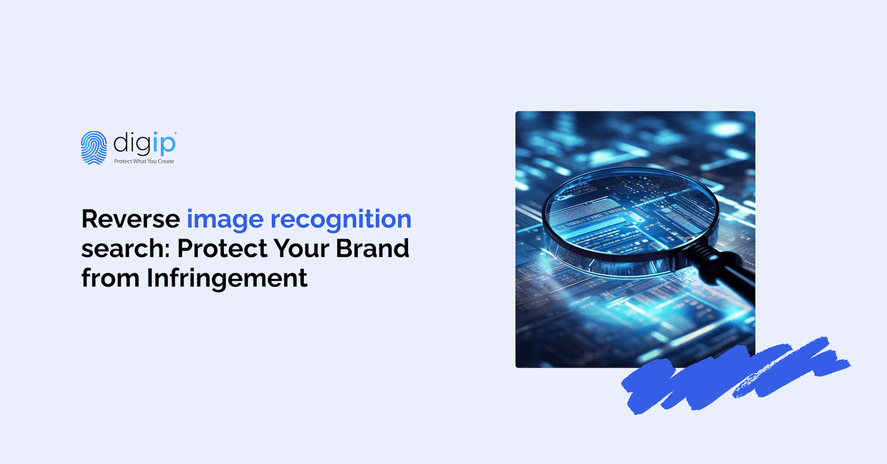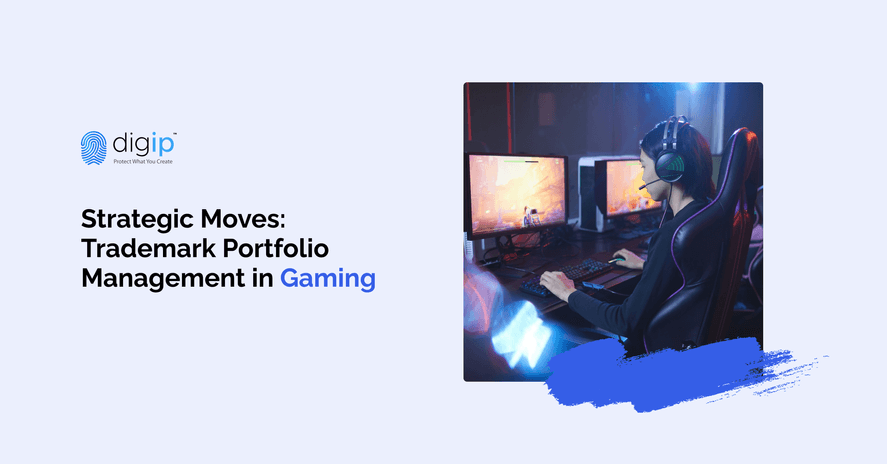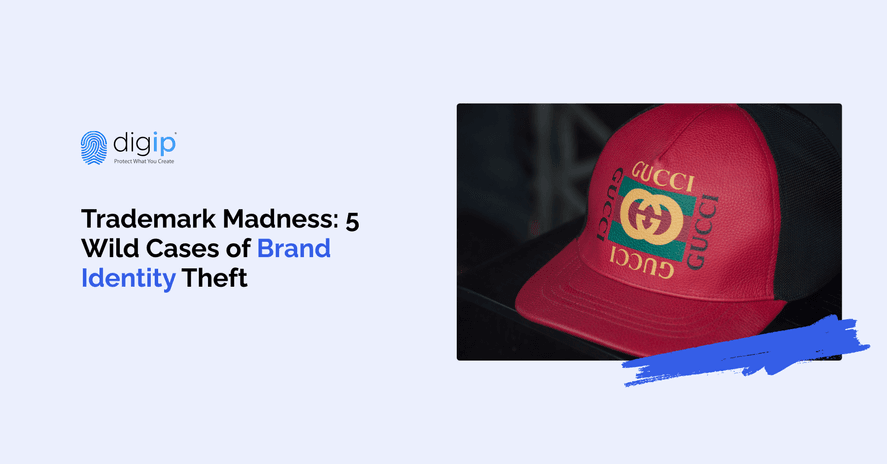
- Trademark
Reverse image recognition search: Protect Your Brand from Infringement
Protecting your brand from infringement is crucial for maintaining its reputation and value. As the digital landscape evolves, so do the tactics of those who seek to profit from the unauthorized use of images and intellectual property. One key weapon in your brand protection arsenal is reverse image recognition search, a technology that can help you proactively identify and combat potential threats to your brand's integrity.
Understanding Reverse Image Recognition
Reverse image recognition refers to the process of identifying and retrieving information about an image by comparing it to a database of previously indexed images. This technology relies on advanced algorithms and artificial intelligence to recognize patterns, shapes, colours, and other visual elements within an image, allowing for a comprehensive analysis and matching process. When it comes to brand protection, reverse image recognition can offer numerous benefits. Firstly, it can help you quickly and accurately identify instances of unauthorized image usage or potential infringements, such as counterfeit products or websites using your brand's images without permission. By proactively detecting these threats, you can take the necessary steps to protect your brand's reputation, value, and intellectual property rights. Additionally, reverse image recognition can be instrumental in monitoring your brand's online presence, ensuring that your images are being used appropriately and in line with your brand guidelines.
Reverse Image Search Tools and Techniques
In the quest for brand protection through reverse image recognition, several tools and techniques can prove invaluable. These include Google's Reverse Image Search, image recognition software, and other popular platforms for reverse image searching. Google's Reverse Image Search is a straightforward and widely accessible tool that allows users to upload an image or enter its URL to find visually similar images and information. By using this search functionality, brands can uncover unauthorized use of their images or potential infringements that may impact their reputation and value. Image recognition software takes reverse image searching a step further, using advanced algorithms and artificial intelligence to analyze images and identify visual elements such as patterns, shapes, and colours. This technology can help brands detect counterfeit products, websites using their images without permission, and even monitor their online presence to ensure consistency with brand guidelines. Other popular platforms for reverse image searching include TinEye, Bing's Visual Search, and Yandex.Images. These services offer additional functionality, such as the ability to search by image type, filter results by usage rights, and track image use over time. By leveraging these tools and techniques, brands can proactively protect their assets and maintain their integrity in the digital landscape.
How to Detect Brand Infringement with Reverse Image Recognition
Detecting brand infringement with reverse image recognition involves several key steps, which include identifying unauthorized use of your images, monitoring for counterfeit products and websites, and assessing the potential impact on your brand. Firstly, it is essential to identify instances of unauthorized image usage, such as when your brand's images appear on websites or marketing materials without permission. To do this, you can leverage reverse image search tools and techniques, such as Google's Reverse Image Search, image recognition software, and other popular platforms. These tools can help you quickly and accurately uncover infringements and take appropriate action. Monitoring for counterfeit products and websites is another crucial aspect of brand protection. By using advanced image recognition technology, you can detect potential counterfeits and fraudulent websites that may use your brand's imagery to deceive customers and damage your reputation. Regularly monitoring your brand's online presence and staying vigilant against potential threats is key to maintaining its integrity and value. Finally, assessing the potential impact of detected infringements on your brand is vital in determining the appropriate course of action. By considering factors such as the scale of unauthorized image usage, the potential for customer confusion, and the overall threat to your brand's reputation, you can make informed decisions about how to address and combat these infringements effectively. This may involve issuing cease and desist letters, sending takedown notices, or pursuing legal action to protect your brand and its intellectual property. In summary, detecting brand infringement with reverse image recognition requires a proactive and vigilant approach, leveraging advanced tools and techniques to identify and address potential threats. By staying ahead of the game, you can safeguard your brand's reputation, value, and intellectual property rights.
Taking Action Against Brand Infringement
Once potential brand infringements have been detected using reverse image recognition, it is crucial to take appropriate action to safeguard your brand's reputation and intellectual property rights. There are several steps you can take to address these infringements, which include issuing cease and desist letters, sending takedown notices and DMCA requests, and pursuing legal enforcement and compensation. Cease and desist letters are a common first step in addressing brand infringement. These formal, written notices inform the infringing party of their unauthorized use of your brand's images and request them to stop immediately. Cease and desist letters can be an effective way to resolve infringement issues without resorting to costly and time-consuming legal proceedings. If cease and desist letters do not yield the desired results, the next step may involve sending takedown notices and Digital Millennium Copyright Act (DMCA) requests. Takedown notices are formal requests sent to website owners, web hosting providers, or search engines, asking for the removal of infringing content. DMCA requests specifically deal with copyright infringement issues and provide a legal framework for addressing unauthorized use of copyrighted materials, including your brand's images. In cases where cease and desist letters and takedown notices do not resolve the infringement issue, it may be necessary to pursue legal enforcement and compensation. This could involve filing a lawsuit against the infringing party, seeking monetary damages for lost revenue, and requesting an injunction to prevent further infringement. Legal enforcement can be a complex and costly process, but it may be necessary to protect your brand's reputation, value, and intellectual property rights. In conclusion, taking action against brand infringement is an essential aspect of maintaining your brand's integrity in the digital landscape. By leveraging reverse image recognition technology and implementing a proactive approach to infringement detection and resolution, you can ensure the continued success and growth of your brand.
Incorporating Reverse Image Recognition into Your Brand Protection Strategy
Integrating reverse image recognition into your brand protection strategy involves a systematic approach that includes regular monitoring and detection, validation and prioritisation of potential infringements, and enforcing your rights to protect your brand's reputation. Regular monitoring and detection of unauthorized image usage and potential infringements is a crucial aspect of brand protection. By using reverse image search tools and image recognition software, you can proactively detect and address potential threats to your brand's reputation and intellectual property rights. This ongoing vigilance ensures that your brand remains protected and that you can respond swiftly to any infringement issues that arise. Once potential infringements have been identified, validation and prioritisation become essential. This process involves assessing the scale and severity of the infringement, as well as its potential impact on your brand's reputation and value. By prioritising the most significant threats, you can allocate resources and take appropriate action more effectively, ensuring that your brand remains secure and its integrity is upheld. Enforcing your rights and protecting your brand's reputation requires a proactive approach to addressing infringements. This may involve sending cease and desist letters, submitting takedown notices and DMCA requests, or pursuing legal enforcement and compensation, depending on the specific circumstances of each infringement. By taking decisive action to protect your brand's intellectual property rights, you can maintain its integrity, reputation, and value, both now and in the future. In conclusion, incorporating reverse image recognition into your brand protection strategy is an essential step towards ensuring the continued success and growth of your brand. By adopting a proactive and comprehensive approach to monitoring, validation, prioritisation, and enforcement, you can safeguard your brand's assets and maintain its reputation in the digital landscape.
Leveraging Digip's Services for Comprehensive Brand Protection
In addition to reverse image recognition, partnering with a trusted service like Digip can provide comprehensive brand protection to ensure the success of your brand. Digip offers a range of services designed to safeguard your brand's reputation, value, and intellectual property rights, all delivered with a professional, confident, and straightforward approach. Trademark search, registration, and surveillance are key services offered by Digip. With their extensive experience and expertise, Digip provides a seamless and efficient process for securing your brand's trademarks. Their user-friendly platform allows you to search over 12 million+ trademarks, while their trademark management platform ensures that your brand remains protected from potential infringements. Digip's streamlined application process and transparent pricing make it easy and cost-effective for businesses to protect their brand. The transparent flat rate fee ensures that you can budget for your brand protection without any unexpected costs, and the quick application process means that you can secure your brand's trademarks in less than 10 minutes. Furthermore, Digip offers online brand protection and IP strategy guidance to help you navigate the complexities of brand protection in the digital landscape. Their team of experts is available to provide unlimited advice on the best strategies for protecting your brand, while their full-service trademark management platform ensures that your brand remains secure and compliant with all relevant regulations. In conclusion, leveraging Digip's services in combination with reverse image recognition technology can provide a comprehensive and effective brand protection strategy. By partnering with a trusted and reliable service like Digip, you can safeguard your brand's reputation, value, and intellectual property rights, ensuring its continued success and growth in the digital world.
Forge Ahead with Confidence
Proactively protecting your brand from infringement is of utmost importance in today's digital landscape. Utilising reverse image recognition search in your brand protection efforts empowers you to detect and address potential threats effectively. Partnering with a trusted service like Digip can provide comprehensive protection for your brand, offering trademark search, registration, surveillance, and more.
- Trademark



